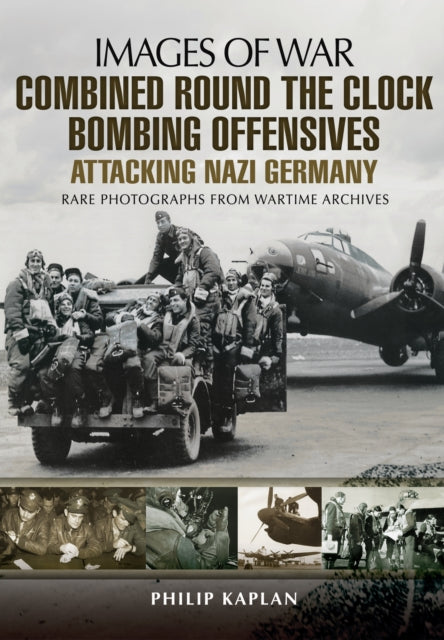Images of War: Combined Round the Clock Bombing Offensives
Usually shipped within 24 hours
UK deliveries from £5.95
Delivery & Returns
Delivery & Returns
We use the Royal Mail, DHL Express or UPS for our customers. For UK addresses, deliveries under 10kg are a standard £4.95 via Royal Mail Tracked 48 Service. For orders over 10kg and overseas customers, postage is calculated for you at checkout once you have entered your postal address. This price, does not include any potential custom charges that may apply, depending on the product or destination, as every country has very different import duties / taxes. Online exclusive products (such as trainers) will be delivered to you directly from the printer, separate from other items in your order, but your postage fee covers ALL items in your order.
If you are unhappy with your purchase, please email shop@tankmuseum.org within fourteen (14) working days of receiving your goods, and return it to us at the address below, in its original condition, unopened (with any seals and shrink-wrap intact) and we will issue you a full refund or replace it. Goods must be returned at your own cost. If the item is faulty, you do not need to return it, we will send you a replacement free of charge.
Description
Description
By Philip Kaplan
Paperback
In World War Two, the most effective fighting units were usually small - submarine crews, infantry platoons, commandos, and bomber crews. Of these it could be said that the men who crewed the bombers caused more damage to the enemy and had a greater impact on the outcome of the conflict than any number of the rest. Most of the aircrews were volunteers (in the RAF, they all were), intelligent, fit, and highly trained.
Each knew he was essential to the team; he knew that a mistake by anyone could mean the death of all. Their interdependence was a welding influence. This library of rare archive photography provides a pictorial history with which to better understand the true extent of Allied operations during the second half of the Second World War, after America had fused its allegiance and the Allied contingent fired itself up for a reactionary attack against Nazi Germany, following a series of defeats and setbacks at their hands during the first half of the war.
First-hand accounts from both American and British bomber pilots feature. An account of the dramatic attack at Peenemunde is included as well as a host of accounts of the 3 December 1943 RAF bombing raid on Berlin. They work to create a real sense of precisely what 'round the clock' actually meant, as these concentrated attacks drained pilots of every ounce of energy they possessed.
![Images of War: Combined Round the Clock Bombing Offensives Book [variant_option4]](http://tankmuseumshop.org/cdn/shop/files/9781783463046.jpg?v=1759156415&width=1214)

![Images of War: Combined Round the Clock Bombing Offensives Book [variant_option4]](http://tankmuseumshop.org/cdn/shop/files/9781783463046.jpg?v=1759156415&width=88)
![Christmas Tank Museum Wrapping Paper - Two sheet pack Wrapping Paper [variant_option4]](http://tankmuseumshop.org/cdn/shop/files/DSC2318.jpg?v=1759225755&width=176)
![Tank Museum Playing Cards Game [variant_option4]](http://tankmuseumshop.org/cdn/shop/files/ProductShoot_10_10_2025035.jpg?v=1760358498&width=176)
![Images of War: Combined Round the Clock Bombing Offensives Book [variant_option4]](http://tankmuseumshop.org/cdn/shop/files/9781783463046.jpg?v=1759156415&width=640)



